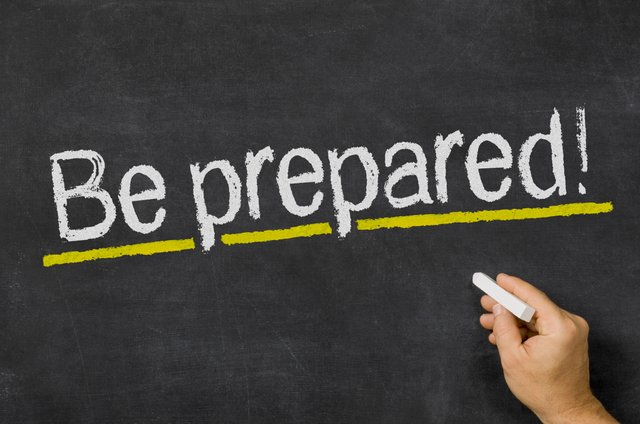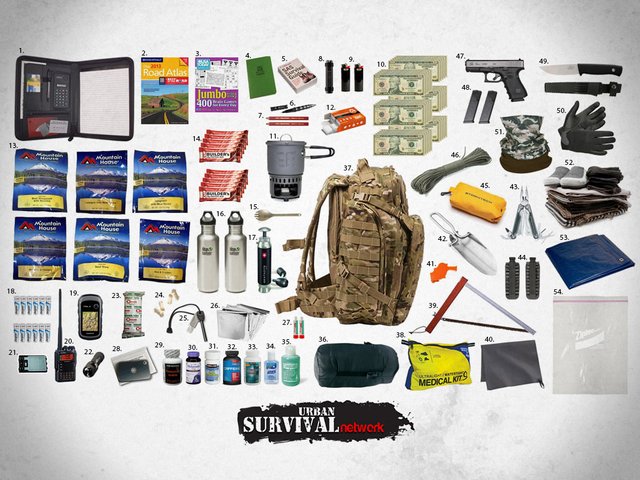SURVIVALIST #28 I’m Never Coming Home

As with most people in the survivalist community, and others around the world, I have a bug out bag and a plan in place should the worst that we hope never happens, actually happens and my family and I have no choice but to leave the comfort of our home and seek shelter in the harsh wilderness.
There is something, however, that very few of us think about and that is what if we weren't able to return home again, maybe ever? Some people believe that they are going to stay put and hunker down in their own home, during a disaster. Which, in my humble opinion, is the best option, if at all possible, just stay put. What about those in cities? Heavily populated areas could be overrun, within a matter of a few days after a disaster hits, by marauders.
Other people believe that 72 hours is more than sufficient enough time to leave home, and then be able to return home again, after the dust has settled. After all, even troops in the military have a load out for their average mission duration of 48-72 hours before resupply. They realize that upon infiltration of an environment they could be completely cut off from supply chains for 2-3 days. The gear they initially take with them is engineered and designed to make life on the battlefield survivable.
There are a lot of dangers out there though, many of which can happen, or are happening now. It doesn't even have to be a doomsday scenario such as a massive earthquake, massive solar flare, nuclear bomb, zombie apocalypse, etc. that provides the reasons why we are unable to return home again. It could be something that has nothing to do with those things; civil unrest, collapse of the dollar, complete grid failure, fire, flood, foreclosure, invasion etc.
Rather than pack my gear for 72 hours as most do, my bag is more along the lines of an “INCH” (I'm Never Coming Home) bag. This doesn't mean that I have loaded my backpack with tons of gear, in fact, it means just the opposite. When I pack I want the survival essentials, and some items that aren't. Some of the items that I put in my personal bug out backpack are: Read "Basics of Bugging Out Post on Steemit"
- Self-defense gear (pistol) Read Post
- Knife
- Hunting gear (rifle)
- Water bottle with nesting cup
- Water purification tablets
- Cup or pot to boil and cook with, (for me that's the nesting cup)
- Eating utensils
- Lifestraw
- Small quantities of food (protein bars)
- Fire starter
- Shelter/tent
- Sleeping bag
- Clothes
- Blanket
- Fishing kit
- First aid kit
- Flashlight
- Glow sticks
- Personal hygiene items etc.
- 550 cord and 550 cord bracelets
- Portable solar panel
- Small electronics
- Barter items
- Write in the rain notepad
- Pencil and pen
- SOL 2-person emergency blanket bivvy
- SOL 2-person emergency sleeping bag bivvy

Just to name a few, however not all of these items will fit inside my backpack, nor will every single item that I would need to survive for extended periods of time in the wilderness. With some planning and preparation there is no reason why you should leave your property to the ravages of nature, or to the hordes of who knows what is coming.
Some people, who have the financial means to expand upon their preparations, have started installing bunkers or shelters, somewhere on their property. Others have even resorted to burying their valuable items as a safety measure against looting, and/or confiscation. There are several methods of caching these items. Some folks bury their smaller important items in enclosed 5-gallon buckets. Others utilize large plastic storage bins for the bigger bugout items they need in order to survive. Caching items normally consists of either burying the gear directly in the ground, at various locations, or erecting a complete underground storage facility, complete with walls, a floor and a ceiling. Quite honestly, the caching method you opt to employ can be as basic, or elaborate, as you would like.
In the event you have to leave your current location on foot, and envision the possibility of not being able to return home, then it might not be a bad idea to develop a plan that allows you to bring along more gear than you normally could in a standard backpack type bug out bag. Something as simple as a small sled/wagon (depending on the season), will provide you with a platform capable of carrying slightly more gear. When selecting this method, bear in mind that the gear carried on the sled/wagon should be non-essential, or at the very least expendable. This recommendation allows you to ditch the excess gear in the event you need to scout out an area ahead before proceeding, or find yourself under duress and in need of escaping to safety quicker than you can towing the cart. You must maintain enough flexibility to fight, and/or run for your life, when necessary.
Check over your essentials list and save on weight where ever possible. Items that you think you can't possibly do without should remain, all else gets discarded. When possible always choose the lightest version of gear possible. For instance, there are several hundred hatchets available on the market; do you really need a 10 lb. model when a 5 lb. version would suffice? The pounds add up very quickly and every ounce counts.
What if you couldn't return home and the ability to resupply was extremely limited, or non-existent? Is it even possible to make it with only the gear that you have with you, your skills, and survival knowledge? I believe anything is possible and this situation is no different. Your will to survive will often outweigh any discrepancies in gear. There is a reason for this; your gear is only as good as your ability to use it. While it is possible to purchase each and every fire making utensil on the market, if you have never practiced with any of them to the point of perfecting that method, then it will serve no better purpose than being unnecessary weight in your bugout bag.
Failure to Plan:
There is an old adage that says; failure to plan is the equivalent of planning to fail. There is no truer statement within the prepping community. In the event of a TEOTWAWKI (The End of the World as We Know It) type situation, all those people without a survival plan, will experience the worst hardships, hazards, and horrors associated with the event. All those who are just beginning to put together a plan will have a slight advantage over those without a plan, but they may not be able to avoid getting caught up in the calamity and forced to endure many of the same conditions experienced by the plan-less hoards. All those who have been participating in a preparedness lifestyle for several years, will have the ultimate advantage over all others. In fact, depending on where they reside, those with preparedness lifestyles might not experience much of an interruption to their daily lifestyle.
Regardless of why you have to start over, the first step is putting together the plan. Walking out your front door with a bugout bag full of gear, thrown over your left shoulder, is a recipe for disaster. Even those of us who have been living the survivalist lifestyle for years, are well aware of the need for a plan. While many disasters will occur unexpectedly, it is how we are able to respond to them that will determine our level of success in being able to survive.
Practicing the Plan:
Practice, practice, practice. A plan is only as good as the person enacting it. If all you do is sit around adding and subtracting various aspects to your plan, then you will never gain the necessary experience to perfect it. It might sound a bit silly in this day and age to spend time participating in actual practice of a survival plan. This is because children of the modern era are being taught to rely on the faulty system of government assistance. The majority of people in America have been instructed to wait for government funded emergency response agencies to arrive, assess the situation, and begin offering assistance. As history has shown, this is only slightly better than not having a personal survival plan in place. Government emergency response agencies are ill equipped to handle the enormous responsibility of providing safety, security, and medical care for all those adversely affected. They have limited supplies and resources which are delivered or provided as they deem fit, to the people prioritized as being the most in need.
Once you have developed a plan, put it into practice. As the leader of your family/group, plan an unscheduled practice of the plan. Attempt to make it as realistic as possible. Kick it off during a weekday instead of a weekend, alert the children unexpectedly by pulling them from class, instructing them to assemble at the rally point, grabbing the bags, and heading to the designated safe haven. Throw in unexpected events along the way. Simulate gridlock on the roadways by finding a suitable spot to park the vehicle for a period of 2-3 days, then continue to the safe haven on foot, using a compass and map to navigate. You might even elect to set up a temporary shelter situation the first night to test the skills of everyone involved, then continue on to the safe haven the following morning.
Corrections for Perfection:
As you practice the survival plan, take notes. Annotate what worked, how well it worked, as well as what didn’t work, and why it failed. These notes will provide the basis for making corrections to the survival plan which will help perfect it as much as possible. Once you have completed a cycle of practice, gone over the notes and made the necessary corrections, it is time to begin the process all over again. Obviously you don’t want to rush back out and practice the plan again immediately. Ensure that each and every member is privy to the corrections being made to the existing plan, then allow them to make adjustments and get used to them. Then, at some point in the not too distant future, spring another unexpected survival plan practice on the group and repeat the process.
Summary:
Very few people have the desire to abandon their comfort zone and strike out for a safe haven permanently. We all hope the day never arrives where we will be forced to make life altering decisions that will undoubtedly affect the way we live the rest of our lives. That being said, it is far better to be prepared and never need to engage a survival plan than to be unprepared and have disaster lurking around every corner.
Original article by Joshua Morin, published in Survivalist Magazine #28
Read All Articles From This Issue and More on STEEMIT Here
If you would like to see more survival and preparedness training, please UpVote & Share below.